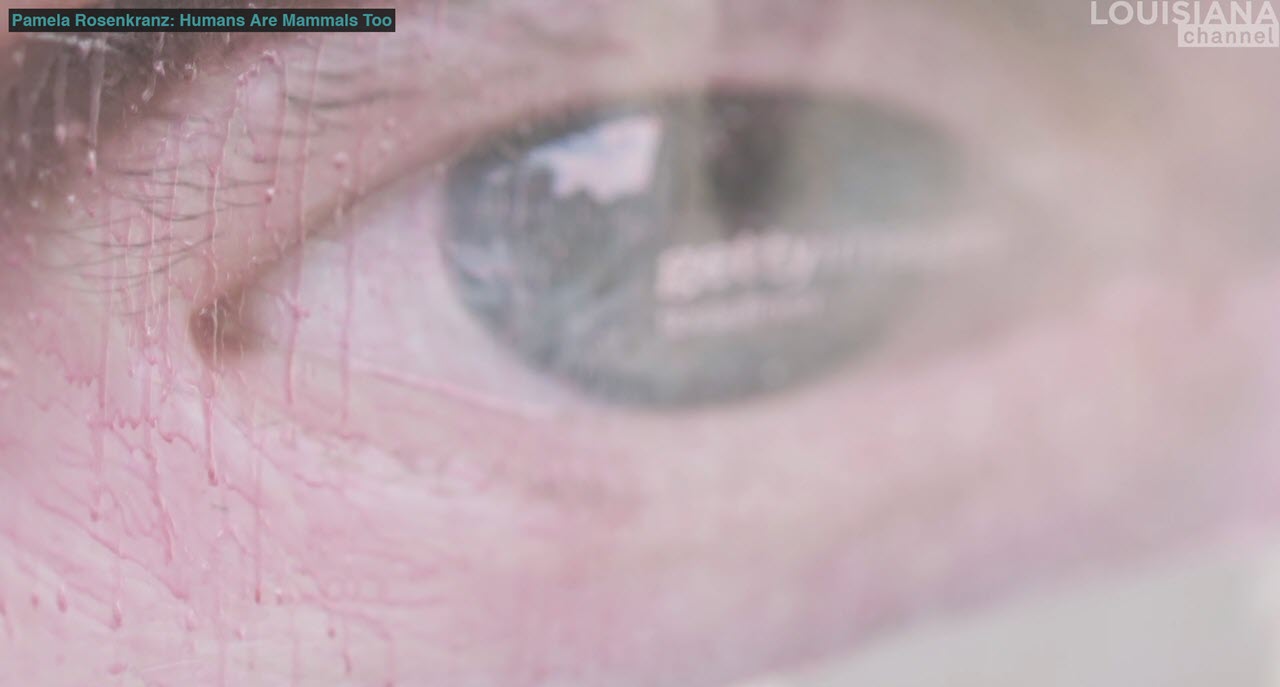VIDEO: Pamela Rosenkranz-Humans Are Mammals Too
Meet Swiss artist Pamela Rosenkranz in her studio in Zug, Switzerland, to a talk about the misunderstood purity of mineral water and the irony of the online warehouse Amazon. Read less …
“My work deals a lot with the appearance of colour and why it triggers something in us.” Pamela Rosenkranz comes from a conceptual backgrou nd. Having worked mainly with black and white to create clarity in her practice, she realised that she was avoiding the complexity that colour could provide: “I realised that the colour that would intrigue me the most was the surface of the humans. Like the skin colour,” she says and elaborates: “I would start to look into the appearance of skin colour as a monochrome basis, which, actually, skin is never monochrome. It’s in itself a very complicated surface of the pigment.”
nd. Having worked mainly with black and white to create clarity in her practice, she realised that she was avoiding the complexity that colour could provide: “I realised that the colour that would intrigue me the most was the surface of the humans. Like the skin colour,” she says and elaborates: “I would start to look into the appearance of skin colour as a monochrome basis, which, actually, skin is never monochrome. It’s in itself a very complicated surface of the pigment.”
After a residency in Venice, Italy, she noticed heaps of water bottles from around the world floating in the canals: “I found it really fascinating to think who would actually have drunk the water and left their genetic traces in them.” Thus, she started the ongoing series of works called Firm Being, which consist of mineral water bottles filled the liquids in the colours of different skin tones. This simulates content that looks like a filling of yourself. “The idea of drinking water as something pure… I was very interested in contradicting this idea,” Rosenkranz explains and points out that most mineral water is in plastic bottles, which contain phthalates that can interact with the human body’s hormonal system. Her wish is to show the multitudes of an everyday object like a bottle: “I don’t like that one thing looks too simple. And I think, in the end, nothing is simple,” she says and concludes: “While we are drinking water we a somehow dying a bit too.”
In the work Anamazon (Into the Land) from 2017, the museum guest is met with a big pile of terra preta earth initially found in the Amazon rainforest. However, the bank is surrounded by artificial green, and blue light and the Alexa speaker was developed and sold by the American conglomerate Amazon. “It’s really interesting how economic organisms like Amazon are profiting from the idea of nature as a figure or a symbol,” Rosenkranz says. Creating an organisation that is as huge and powerful as the Amazon rainforest “is a very beautiful idea, but obviously, you can’t create a big commercial organism without somebody that pays for it.” In the space of Anamazon (Into the Land), the LED lights imitate the sky of the Amazon rainforest while we listen to the cacophony of natural sounds. This is interrupted by Alexa naming all products sold on the Amazon online shop.
Rosenkranz wants the viewer to realise how much we rely on our instincts, even though we might not be aware of it: “We can learn to realise it. We can do that with our consciousness,” she says and continues: “Art can raise consciousness, and, in that sense, I want to create something beautiful but disturbing.”
Pamela Rosenkranz (b. 1979) is a Swiss artist working in painting, sculpture, video, and installation. Her conceptual work explores the human experience of the world in the intersection of biology and technology, between the so-called natural and the so-called artificial. In Rosenkranz’s art, identity is a combination of an evolutionary accident and its technological manipulation. She graduated from the University of Zurich in 2005 and received her MFA from the Academy of Fine Arts, Bern, in 2010. While being a student, Rosenkranz participated in both the 5th Berlin Biennale and Manifesta 7 in Trentino, Italy. In 2015 she represented Switzerland at the Venice Biennale with the installation Our Product. She has held solo exhibitions at institutions including GAMeC, Bergamo (upcoming); Cisterna, Fondazione Prada, Milan (both 2017); Kunsthalle Basel (2012); Centre d’Art Contemporain, Geneva (2010); Swiss Institute, Venice (2009). Selected group exhibitions include Being There, Louisiana Museum of Modern Art, Denmark (2017), The Garden, Aros Museum of Modern Art, Aarhus, (2017); Wirkuta (Mexican Time-Slip), Museo Espacio, Aguascalientes, Mexico; Dreaming Mirrors Dreaming Screens, Sprüth Magers, Berlin (all 2016); No Man’s Land: Women Artists from the Rubell Family Collection, Rubell Family Collection, Miami (2015); Inhuman, Fridericianum, Kassel (2014); Think First, Shoot Later: Photography from the MCA Collection, Museum of Contemporary Art, Chicago; and EXPO1: New York, MOMA PS1, New York, (both 2013).
Pamela Rosenkranz was interviewed at her studio in Zug, Switzerland, by Roxanne Bagheshirin Lærkesen, Camera: Rasmus Quistgaard, Produced and edited by: Roxanne Bagheshirin Lærkesen, © Louisiana Channel, Louisiana Museum of Modern Art, 2022, Louisiana Channel is supported by Den A.P. Møllerske Støttefond, Ny Carlsbergfondet, C.L. Davids Fond og Samling and Fritz Hansen
